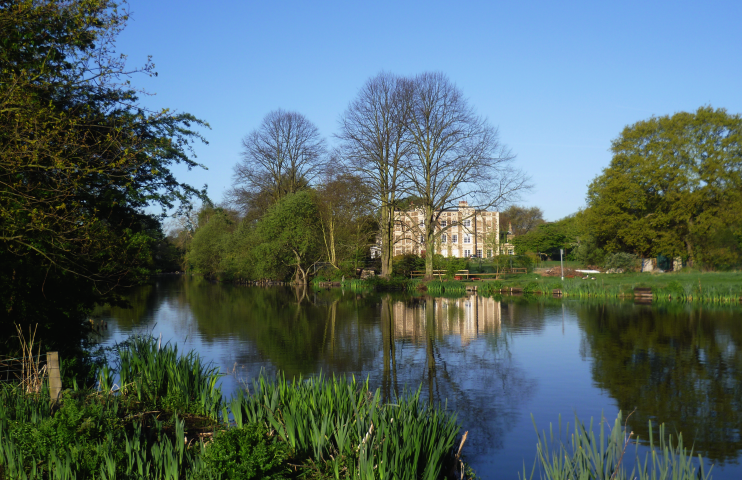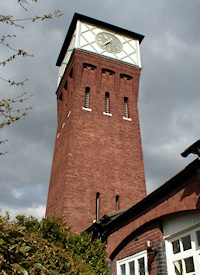Lamorbey
Lamorbey, Bexley
A former village, now lost in north Sidcup, with a recent history dominated by facilities for young people

Lamorbey was originally spelt Lamienby, which briefly became corrupted to Lamb Abbey (hence Abbeyhill Park) before settling down to its current form. The name derives from a local family, also known as the Sparrows, which lived here from the late Middle Ages.
On the death of Thomas Sparrow in 1513 the estate passed to James Goldwell, who built himself a house called Lamienby Goldwell. The house was rebuilt in 1744 and its grounds were laid out as a park, shown in the photograph above,* part of which is nowadays open to the public. To its west lay the 16th-century Marrowbone Hall, which was demolished sometime before 1850.
With the proximity of Sidcup station the village began to grow in the latter decades of 19th century and the parish of Holy Trinity was created in 1878. Holy Trinity primary school is now the largest voluntary-aided primary school in the diocese of Rochester.
Lamorbey’s population almost doubled in 1902 when the Greenwich and Deptford children’s homes opened on the site of Marrowbone Hall with accommodation for 587 children and over 60 staff. A school was built for the children, on Burnt Oak Lane.

After the First World War the surrounding orchards, market gardens and nurseries began to disappear beneath streets of suburban housing and Lamorbey absorbed the neighbouring hamlet of Halfway Street. Some plots of land were sold to disabled ex-servicemen for £80 each.
A new home for the Sidcup county school for girls (now Chislehurst and Sidcup grammar school) was built on the south side of Lamorbey Park in 1931.
In 1950 Rose Bruford established her drama school at Lamorbey House, where she served as principal until 1967.
The Hollies children’s home closed in 1983 and the site was laid out with housing in the early 1990s. Some of the home’s ancillary structures survive, notably Thomas Dinwiddy’s clock-faced water tower.
